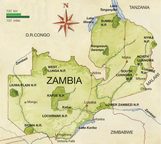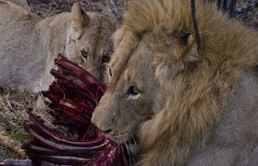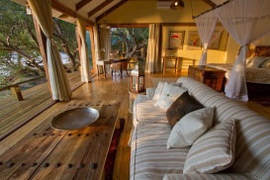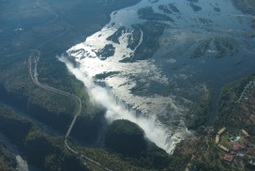Experience Zambia: The Real Africa

Welcome to Zambia, a hidden treasure in the heart of Africa, celebrated for its wild landscapes, diverse wildlife, and warm, welcoming people. Known as “The Real Africa,” Zambia offers an authentic safari experience that takes you off the beaten path and into a world of natural beauty and adventure. Explore Zambia with Edge Travel and uncover the wonders that make this country a true gem for nature enthusiasts and adventurers alike.
Discover Zambia’s Iconic National Parks
Zambia is home to some of Africa’s most pristine and diverse national parks, each offering unique opportunities to experience the continent’s unparalleled wildlife and natural beauty.
South Luangwa National Park
South Luangwa National Park is one of Africa’s premier wildlife destinations, renowned for its high concentration of game and unspoiled wilderness. The park is home to a variety of wildlife, including elephants, lions, leopards, and a significant population of hippos along the Luangwa River. South Luangwa is famous for its walking safaris, offering visitors an intimate and immersive way to explore the park’s diverse landscapes and observe its abundant wildlife up close.
Lower Zambezi National Park
Lower Zambezi National Park offers a unique safari experience along the majestic Zambezi River. The park’s lush riverbanks and floodplains attract a plethora of wildlife, including buffaloes, elephants, and a variety of antelope species. Visitors can enjoy game drives, boat safaris, and canoeing excursions, providing a diverse and dynamic perspective on Zambia’s wildlife and stunning scenery.
Kafue National Park
Kafue National Park is Zambia’s largest and oldest national park, covering an area of over 22,400 square kilometers. The park’s varied ecosystems, from savannas and wetlands to dense woodlands, support a rich array of wildlife, including cheetahs, wild dogs, and an impressive diversity of bird species. Kafue’s remote and vast landscapes offer a truly wild and exclusive safari experience, far from the crowds and teeming with natural beauty.
North Luangwa National Park
North Luangwa National Park is one of Africa’s most untouched wilderness areas, known for its rugged beauty and pristine landscapes. The park is a haven for wildlife, including large herds of buffaloes, elephants, and rare species such as the Cookson's wildebeest. North Luangwa is perfect for those seeking a remote and adventurous safari experience, with opportunities for walking safaris that provide a close and personal encounter with nature.
The Mighty Zambezi:
Adventures and Waterfalls
The Zambezi River, one of Africa’s largest and most iconic rivers, flows through Zambia and offers a wealth of adventurous activities and stunning natural wonders.
Victoria Falls: The Smoke That Thunders
Victoria Falls, known locally as “Mosi-oa-Tunya” or “The Smoke That Thunders,” is one of the world’s most spectacular waterfalls. The falls straddle the border between Zambia and Zimbabwe, creating a breathtaking cascade that can be seen from miles away. Visitors can experience the falls from various viewpoints, take guided tours, and enjoy adrenaline-pumping activities such as bungee jumping, white-water rafting, and helicopter flights that offer a bird’s-eye view of this natural wonder.
Zambezi River Adventures
The Zambezi River is renowned for its thrilling white-water rapids and serene stretches, making it a perfect destination for adventure seekers and nature lovers alike. Experience the thrill of white-water rafting on the river’s turbulent rapids, or enjoy a more relaxed adventure with a boat cruise, canoeing expedition, or fishing trip. The Zambezi’s diverse activities offer something for everyone, whether you’re seeking excitement or tranquility.
Rich Cultural Heritage and Warm Hospitality
Zambia’s rich cultural heritage is reflected in its vibrant communities and diverse traditions. Exploring the cultural aspects of Zambia provides a deeper understanding of the country’s history and its welcoming spirit.
Lusaka: The Heart of Zambia
Lusaka, the capital city of Zambia, is a bustling metropolis that blends modernity with tradition. The city offers a variety of attractions, including bustling markets, cultural centers, and historical sites. Visit the Lusaka National Museum to learn about Zambia’s cultural and historical heritage, or explore the city’s vibrant markets to discover local crafts, cuisine, and a taste of Zambian life.
Livingstone: Gateway to Victoria Falls
Livingstone is a charming town located near Victoria Falls, known for its colonial architecture and vibrant culture. The town offers a range of cultural attractions, including the Livingstone Museum, which provides insights into Zambia’s history and the exploration of Africa. Livingstone is also a hub for adventure activities, making it a perfect base for exploring the falls and the surrounding areas.
Traditional Villages and Cultural Tours
Experience the warmth and hospitality of Zambia’s diverse ethnic groups by visiting traditional villages and participating in cultural tours. Learn about local customs, traditional dances, and crafts, and engage with the communities that call this beautiful country home. These experiences offer a unique glimpse into the daily lives and traditions of Zambian people and provide an enriching addition to any travel itinerary.
Outdoor Adventures and Natural Wonders
Zambia’s diverse landscapes offer a variety of outdoor adventures and natural wonders, from thrilling safaris to scenic hikes and water sports.
Lake Kariba
Lake Kariba, one of the world’s largest man-made lakes, offers stunning scenery and a range of water-based activities. Enjoy a boat cruise on the lake’s tranquil waters, go fishing for the famous tiger fish, or explore the scenic shores and islands. The lake’s serene atmosphere and beautiful landscapes make it a perfect destination for relaxation and adventure.
Mutinondo Wilderness
The Mutinondo Wilderness is a hidden gem known for its unique granite outcrops, lush woodlands, and pristine rivers. The area offers excellent hiking, birdwatching, and rock climbing opportunities, with trails that lead to stunning viewpoints and secluded swimming spots. Mutinondo is a paradise for nature lovers and adventure seekers, providing a peaceful retreat in the heart of Zambia’s wilderness.
When to Visit Zambia
Zambia is a year-round destination, but the best time to visit depends on your interests. The dry season, from May to October, is ideal for wildlife viewing and outdoor activities, with clear skies and cooler temperatures. The wet season, from November to April, brings lush landscapes and fewer tourists, making it a great time for birdwatching and exploring Zambia’s natural beauty.
Plan Your Zambian Adventure with Edge Travel
Zambia’s diverse landscapes, rich cultural heritage, and welcoming people make it an extraordinary destination for travelers seeking adventure and relaxation. At Edge Travel, we specialize in creating tailor-made itineraries that capture the essence of Zambia, ensuring a journey that is as unique and enriching as the country itself.
Contact us today to start planning your Zambian adventure and discover why this country is known as “The Real Africa.” Visit Edge Travel or email us at [email protected] for more information and to create a bespoke travel experience that caters to your unique interests and preferences.
Discover Zambia’s Iconic National Parks
Zambia is home to some of Africa’s most pristine and diverse national parks, each offering unique opportunities to experience the continent’s unparalleled wildlife and natural beauty.
South Luangwa National Park
South Luangwa National Park is one of Africa’s premier wildlife destinations, renowned for its high concentration of game and unspoiled wilderness. The park is home to a variety of wildlife, including elephants, lions, leopards, and a significant population of hippos along the Luangwa River. South Luangwa is famous for its walking safaris, offering visitors an intimate and immersive way to explore the park’s diverse landscapes and observe its abundant wildlife up close.
Lower Zambezi National Park
Lower Zambezi National Park offers a unique safari experience along the majestic Zambezi River. The park’s lush riverbanks and floodplains attract a plethora of wildlife, including buffaloes, elephants, and a variety of antelope species. Visitors can enjoy game drives, boat safaris, and canoeing excursions, providing a diverse and dynamic perspective on Zambia’s wildlife and stunning scenery.
Kafue National Park
Kafue National Park is Zambia’s largest and oldest national park, covering an area of over 22,400 square kilometers. The park’s varied ecosystems, from savannas and wetlands to dense woodlands, support a rich array of wildlife, including cheetahs, wild dogs, and an impressive diversity of bird species. Kafue’s remote and vast landscapes offer a truly wild and exclusive safari experience, far from the crowds and teeming with natural beauty.
North Luangwa National Park
North Luangwa National Park is one of Africa’s most untouched wilderness areas, known for its rugged beauty and pristine landscapes. The park is a haven for wildlife, including large herds of buffaloes, elephants, and rare species such as the Cookson's wildebeest. North Luangwa is perfect for those seeking a remote and adventurous safari experience, with opportunities for walking safaris that provide a close and personal encounter with nature.
The Mighty Zambezi:
Adventures and Waterfalls
The Zambezi River, one of Africa’s largest and most iconic rivers, flows through Zambia and offers a wealth of adventurous activities and stunning natural wonders.
Victoria Falls: The Smoke That Thunders
Victoria Falls, known locally as “Mosi-oa-Tunya” or “The Smoke That Thunders,” is one of the world’s most spectacular waterfalls. The falls straddle the border between Zambia and Zimbabwe, creating a breathtaking cascade that can be seen from miles away. Visitors can experience the falls from various viewpoints, take guided tours, and enjoy adrenaline-pumping activities such as bungee jumping, white-water rafting, and helicopter flights that offer a bird’s-eye view of this natural wonder.
Zambezi River Adventures
The Zambezi River is renowned for its thrilling white-water rapids and serene stretches, making it a perfect destination for adventure seekers and nature lovers alike. Experience the thrill of white-water rafting on the river’s turbulent rapids, or enjoy a more relaxed adventure with a boat cruise, canoeing expedition, or fishing trip. The Zambezi’s diverse activities offer something for everyone, whether you’re seeking excitement or tranquility.
Rich Cultural Heritage and Warm Hospitality
Zambia’s rich cultural heritage is reflected in its vibrant communities and diverse traditions. Exploring the cultural aspects of Zambia provides a deeper understanding of the country’s history and its welcoming spirit.
Lusaka: The Heart of Zambia
Lusaka, the capital city of Zambia, is a bustling metropolis that blends modernity with tradition. The city offers a variety of attractions, including bustling markets, cultural centers, and historical sites. Visit the Lusaka National Museum to learn about Zambia’s cultural and historical heritage, or explore the city’s vibrant markets to discover local crafts, cuisine, and a taste of Zambian life.
Livingstone: Gateway to Victoria Falls
Livingstone is a charming town located near Victoria Falls, known for its colonial architecture and vibrant culture. The town offers a range of cultural attractions, including the Livingstone Museum, which provides insights into Zambia’s history and the exploration of Africa. Livingstone is also a hub for adventure activities, making it a perfect base for exploring the falls and the surrounding areas.
Traditional Villages and Cultural Tours
Experience the warmth and hospitality of Zambia’s diverse ethnic groups by visiting traditional villages and participating in cultural tours. Learn about local customs, traditional dances, and crafts, and engage with the communities that call this beautiful country home. These experiences offer a unique glimpse into the daily lives and traditions of Zambian people and provide an enriching addition to any travel itinerary.
Outdoor Adventures and Natural Wonders
Zambia’s diverse landscapes offer a variety of outdoor adventures and natural wonders, from thrilling safaris to scenic hikes and water sports.
Lake Kariba
Lake Kariba, one of the world’s largest man-made lakes, offers stunning scenery and a range of water-based activities. Enjoy a boat cruise on the lake’s tranquil waters, go fishing for the famous tiger fish, or explore the scenic shores and islands. The lake’s serene atmosphere and beautiful landscapes make it a perfect destination for relaxation and adventure.
Mutinondo Wilderness
The Mutinondo Wilderness is a hidden gem known for its unique granite outcrops, lush woodlands, and pristine rivers. The area offers excellent hiking, birdwatching, and rock climbing opportunities, with trails that lead to stunning viewpoints and secluded swimming spots. Mutinondo is a paradise for nature lovers and adventure seekers, providing a peaceful retreat in the heart of Zambia’s wilderness.
When to Visit Zambia
Zambia is a year-round destination, but the best time to visit depends on your interests. The dry season, from May to October, is ideal for wildlife viewing and outdoor activities, with clear skies and cooler temperatures. The wet season, from November to April, brings lush landscapes and fewer tourists, making it a great time for birdwatching and exploring Zambia’s natural beauty.
Plan Your Zambian Adventure with Edge Travel
Zambia’s diverse landscapes, rich cultural heritage, and welcoming people make it an extraordinary destination for travelers seeking adventure and relaxation. At Edge Travel, we specialize in creating tailor-made itineraries that capture the essence of Zambia, ensuring a journey that is as unique and enriching as the country itself.
Contact us today to start planning your Zambian adventure and discover why this country is known as “The Real Africa.” Visit Edge Travel or email us at [email protected] for more information and to create a bespoke travel experience that caters to your unique interests and preferences.
These are just a few examples of the many incredible safari destinations that Zambia has to offer. Each of these places offers a unique wildlife experience and spectacular landscapes that will make your safari adventure unforgettable.
Here are a few of our more popular Zambia trips:
Here are a few of our more popular Zambia trips:





